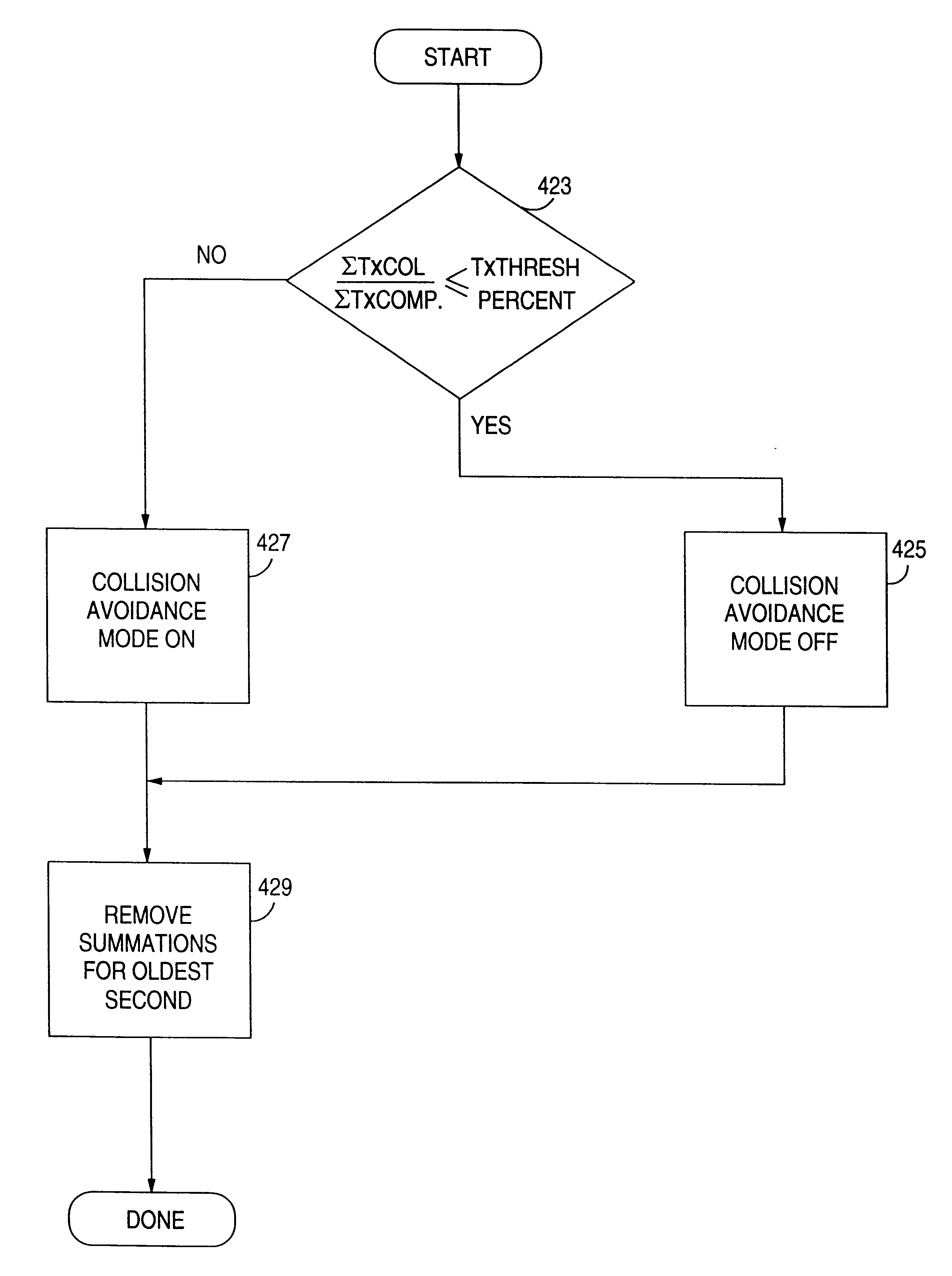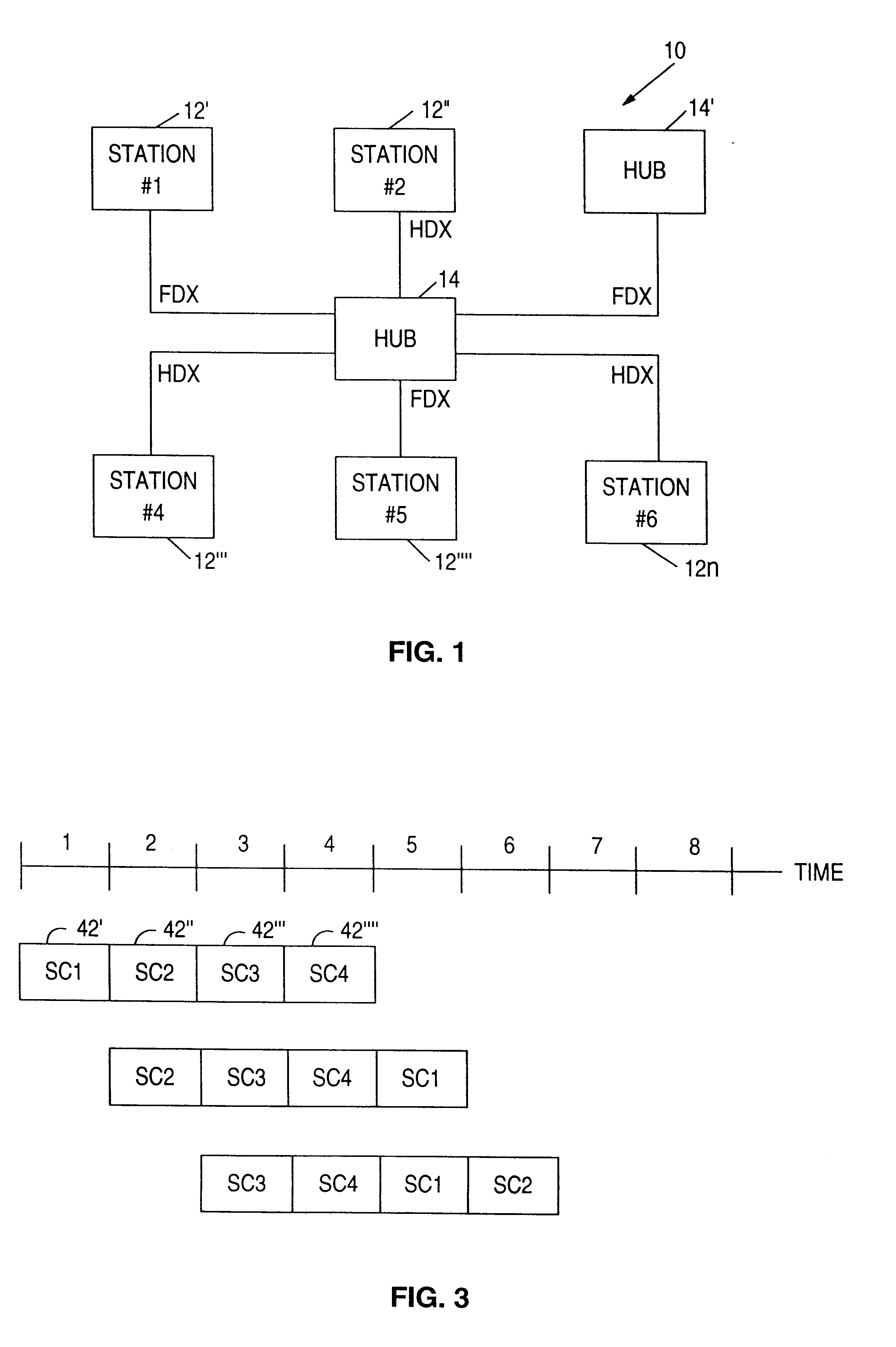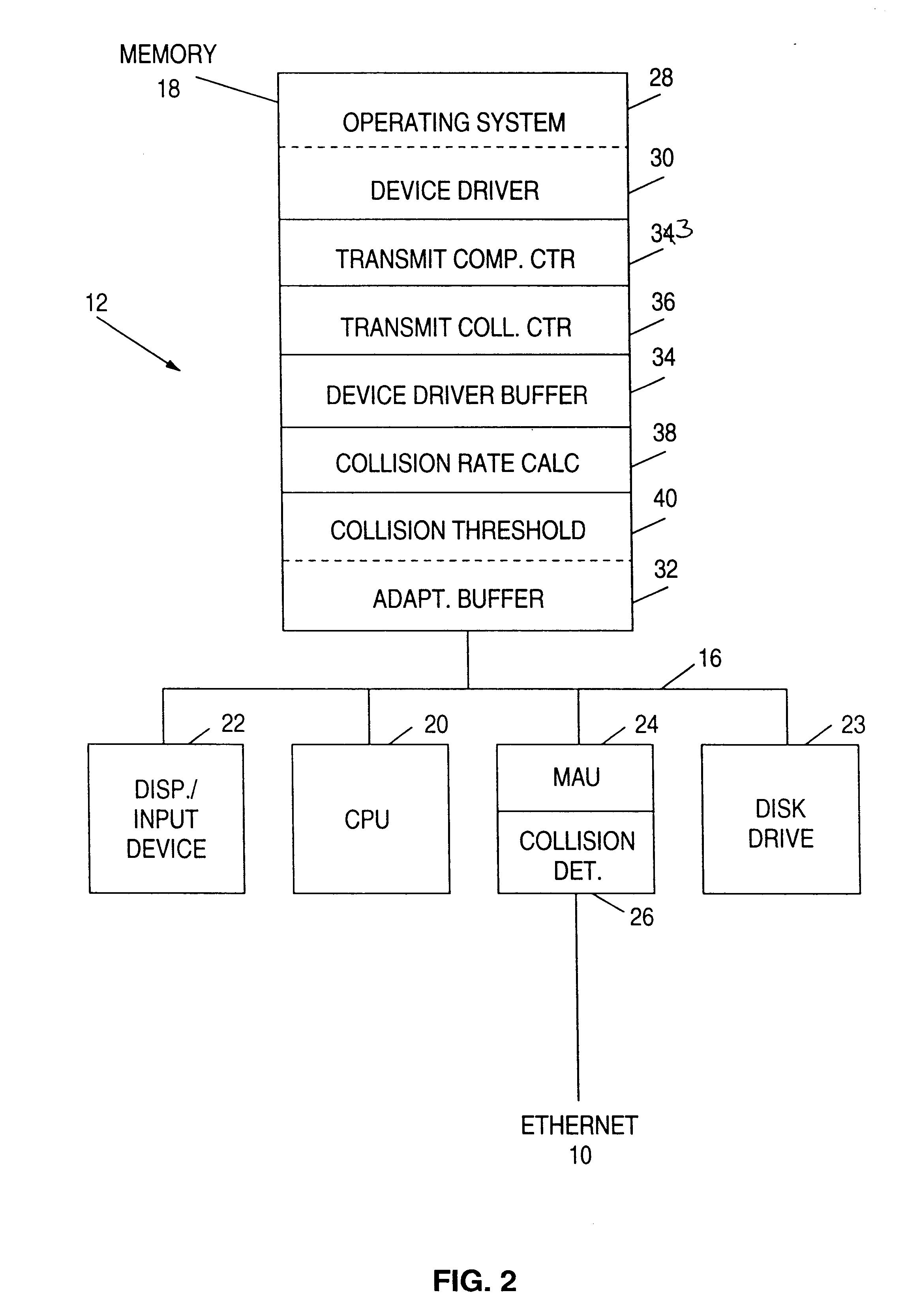Dynamic transmit tuning for ethernet device drivers
a technology of dynamic transmission and ethernet device, applied in the field of communication networks, can solve problems such as poor network performance, and none of the prior art addresses the problem of dynamic transmission tuning of ethernet device drivers for improving network performan
- Summary
- Abstract
- Description
- Claims
- Application Information
AI Technical Summary
Benefits of technology
Problems solved by technology
Method used
Image
Examples
Embodiment Construction
In FIG. 1, a communications network 10 of the ethernet type includes a plurality of stations or nodes 12' . . . 12n coupled to a hub 14 in a half-duplex (HDX) or full-duplex (FDX) mode with the FDX mode being implemented in the hub. The network operates in the CSMA / CD mode as described in IEEE standard 802.3 with collision avoidance. The text "Ethernet--Building a Communications Infrastructure" by H. Hegering et al, published by Addison-Wesley Publishing Company, Wokingham, England, 1993 (ISBN: 0-201-62405-2), pages 12, 33 provides additional details on an ethernet and the full text is incorporated by reference into the present application.
In FIG. 2, a representative station or node 12 in the network includes an input / output (I / O) bus 16 coupled to a conventional memory 18, central processing unit 20, display / input device 22 and a disk storage device 23 which accepts a computer usable medium e.g. a floppy disk or mini embodying stored computer program instructions for entry into or ...
PUM
 Login to View More
Login to View More Abstract
Description
Claims
Application Information
 Login to View More
Login to View More - R&D
- Intellectual Property
- Life Sciences
- Materials
- Tech Scout
- Unparalleled Data Quality
- Higher Quality Content
- 60% Fewer Hallucinations
Browse by: Latest US Patents, China's latest patents, Technical Efficacy Thesaurus, Application Domain, Technology Topic, Popular Technical Reports.
© 2025 PatSnap. All rights reserved.Legal|Privacy policy|Modern Slavery Act Transparency Statement|Sitemap|About US| Contact US: help@patsnap.com



